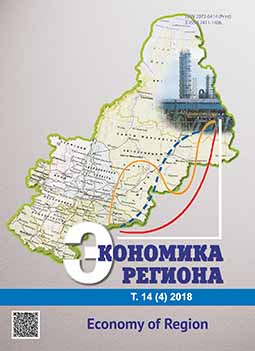Двухкритериальная модель стратификации Российского общества по доходам и жилищной обеспеченности
Two-Criterion Model of the Russian Society Stratification by Income and Housing Security
Author(s): Vyacheslav Nikolaevich Bobkov, Peter Herrmann, Igor Borisovich Kolmakov, Elena Valeryevna OdintsovaSubject(s): Economy, National Economy, Socio-Economic Research
Published by: Институт экономики Уральского отделения Российской академии наук
Keywords: material security; cash income; housing security; inequality of distribution of cash income; inequality of distribution of housing security; social standards; criterion boundaries; social groups;
Summary/Abstract: The article identifies the social structure of the Russian society by the level of material security. The research results proceed from the early authors’ studies on the analysis of the inequality of population distribution according to certain components of material security (income and housing security). The subject matter of this study was to identify the scale of social groups in the two-criteria model of social structure by the level of cash income and housing security. We proceeded from the hypothesis that compared with the single-criteria model of social structure, representing the integral distribution by the level of material security, its two-criteria model reveals social groups that significantly vary by the scale. The article presents the updated criteria of material security. We used these criteria to form social structure models. To update the criteria, we used mathematical models and informative indicators, which allowed to clarify the quantitative requirements for the level of cash income and housing parameters. Moreover, we relied on the foreign and domestic experience of research and development on this issue. However, we present for the first time a two-criteria model of the social structure of the Russian society by the level of material security based on the updated standards. For assessments and forming this model of social structure, we used the official statistics and the Russia Longitudinal Monitoring Survey, RLMS — HSE. The results can be applied in the development of targeted social policy measures, as well as may be in demand for further theoretical and methodological substantiation and practical research on material security and identification of social structures.
Journal: Экономика региона
- Issue Year: 14/2018
- Issue No: 4
- Page Range: 1061-1075
- Page Count: 15
- Language: Russian

